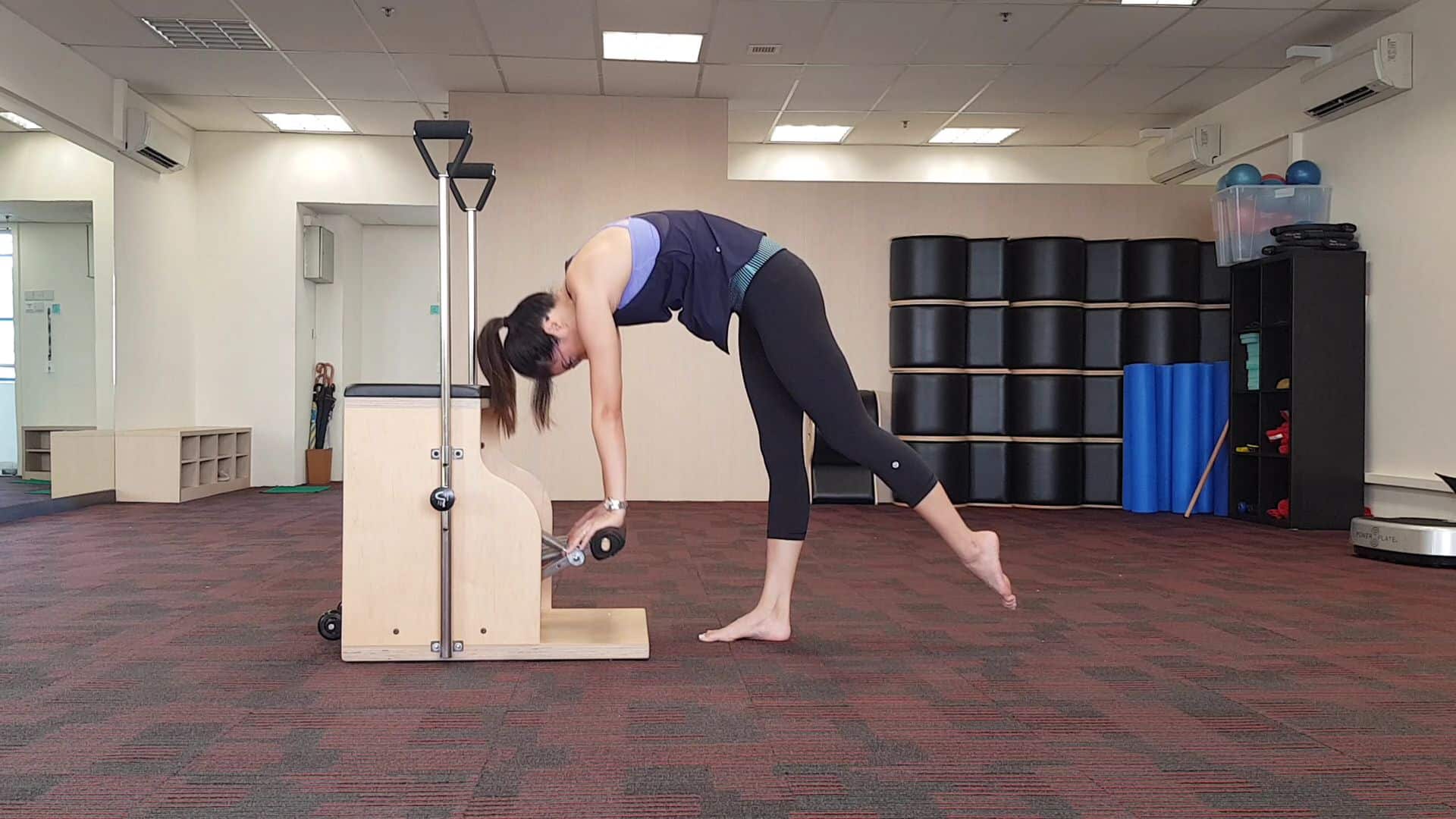In my years of doing Yoga, I took pride in my flexibility and ability to stretch and bend myself into any asanas I see. Naturally, I was always asked to bend more since I am flexible.
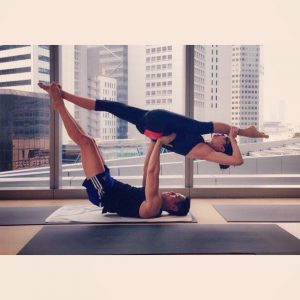
I seriously hurt my right hamstrings 12 years ago in one of the Hot Yoga classes, when the teacher assisted me to go deeper into a pose and at that moment I felt a tearing sensation. It hurt to the point that I could not lift my leg to get up onto a pavement. However, the pain went away gradually but the strain stayed with me for years.
There will always be this throbbing pain at my right sitbone area, reminding me of the injury. Coupled with other injury like a fractured ankle, my entire right hip and right leg was affected. I also suffered from sciatica nerve pain and causing me to limp. I was only 26 yrs old then.
I have tried myofascial release and some strengthening work but the effects didn’t last. Until PBT introduced the MFA, which all of the teachers had to try. The results from the assessment formed a great part of my recovery plan and I was particularly surprised by this piece, Single leg Rolldown.
What is Single Leg Rolldown?
It requires you to stand on one leg and do a standing rolldown, challenging not just the flexibility of the hamstring and its ability to engage while lengthening and recoil when at the end range.
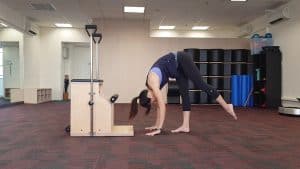
This exercise can show us a few things:
- Spinal Articulation. The ability to move one’s spine bone by bone.
- Glutes strength. Standing on one leg challenges the gluteus medius and gluteus minimus strength to maintain the levelness of the hips throughout the exercise. If one side of the hips drops, the person has what we refer to as Trendelenburg syndrome. (refer to pic on the right)

- Functional strength of your arch affecting your single leg balance. The arch is like a bridge or a trampoline which is build to support the entire body. Imagine the bridge collapses, what do you think will happen to the structure that is build upon it? If you have low arch or no arch, your foot is unstable, causing you to feel unstable when standing on one leg. There is a technique called short foot to help lift the arches of our feet, taught in our BARE Workout class. To find out more, please refer to Evidence Based Fitness Academy founded by Dr Emily Splichal.
- Flexibility and Strength of Hamstring. When lying supine on the floor, an average person’s hamstring should allow a 81 deg flexion at the hip.
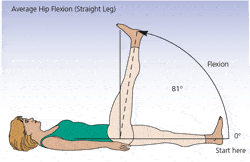
Besides that, like any healthy muscles, it should be elastic. If the muscle loses its ability to recoil when stretched, it will be dangerous for the person to keep stretching its muscle without an intention or without strengthening it. We want to be mobile and not passively flexibility. Being mobile means to be able to enjoy a wide range of motion supported by muscles.
There are 2 phases in the hamstring part of the exercise;
Eccentric phase – Rolling down forces my hamstring to withstand my body weight when I am stretching my hamstring. Eccentric contraction means the muscles is producing a force and lengthened at the same time.
Concentric phase – Engaging my hamstrings when rolling up. My hamstrings had to be strong enough to engage particularly from stretched position. Just like a rubber band, a muscle is most vulnerable when it is being stretched, therefore it is important work on the active engagement of the end range of my hamstring.
What did I find out and what do they mean?
- Right trendelenburg – My right butt muscles are sleeping and it is not supporting me the way it should causing strain to pelvis.
- I could not roll up from the ground. – My hamstrings are very flexible but they are not strong and elastic! It could not activate when stretched.
Knowing my weakness, I tailored a plan for myself. Butt strengthening exercises eg, abductor work on reformer, single leg pelvic press, barefoot training and of course, single leg rolldown.
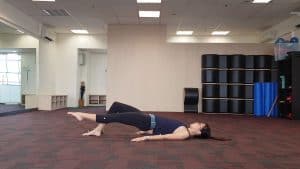
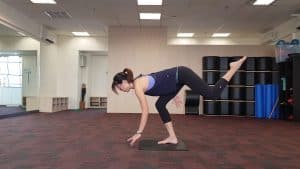
When I first started Single rolldown, I needed assistance. This piece, is also known as Washerwoman, can be performed on the Wunda Chair. Over time I decreased the spring resistance, allowing my body to progress towards lesser support and eventually, unassisted.
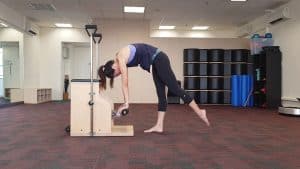
‘Stretch your hamstrings!’ is probably commonly heard, but you also want to ask yourself, how strong are your hamstrings? Tailoring recovery plan was crucial and I wouldn’t have known if I hadn’t tried this exercise. I strongly encourage everyone to try this exercise or if you know of anyone whom you think will benefit from the assessment, do give it a go at https://pilatesbodytree.com/mobilityfitness
Reference:
https://www.physio-pedia.com/Trendelenburg_Test
http://www.musicianshealthcollective.com/blog/2015/2/25/anatomy-corner-hip-extension-and-hip-flexion
